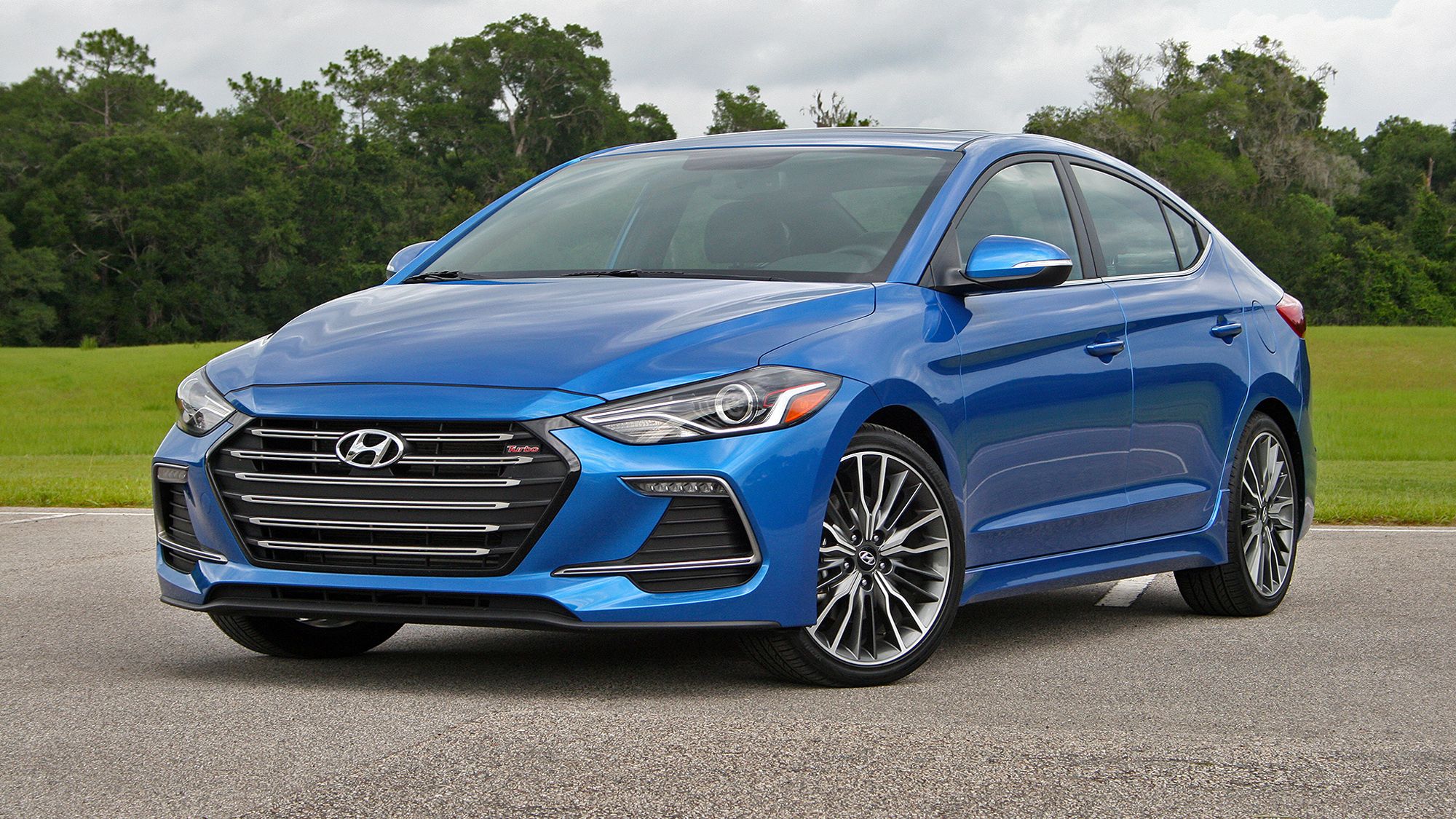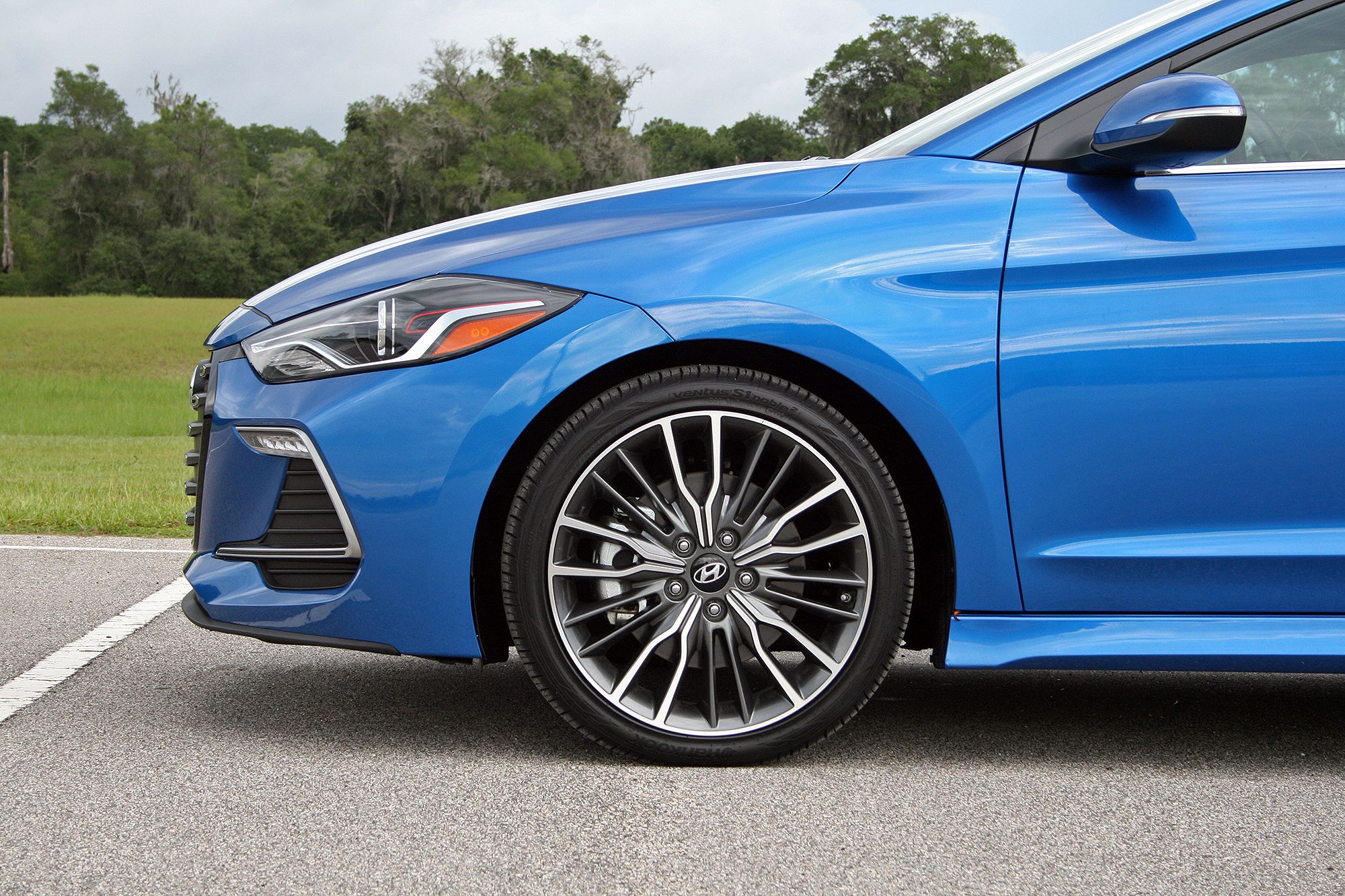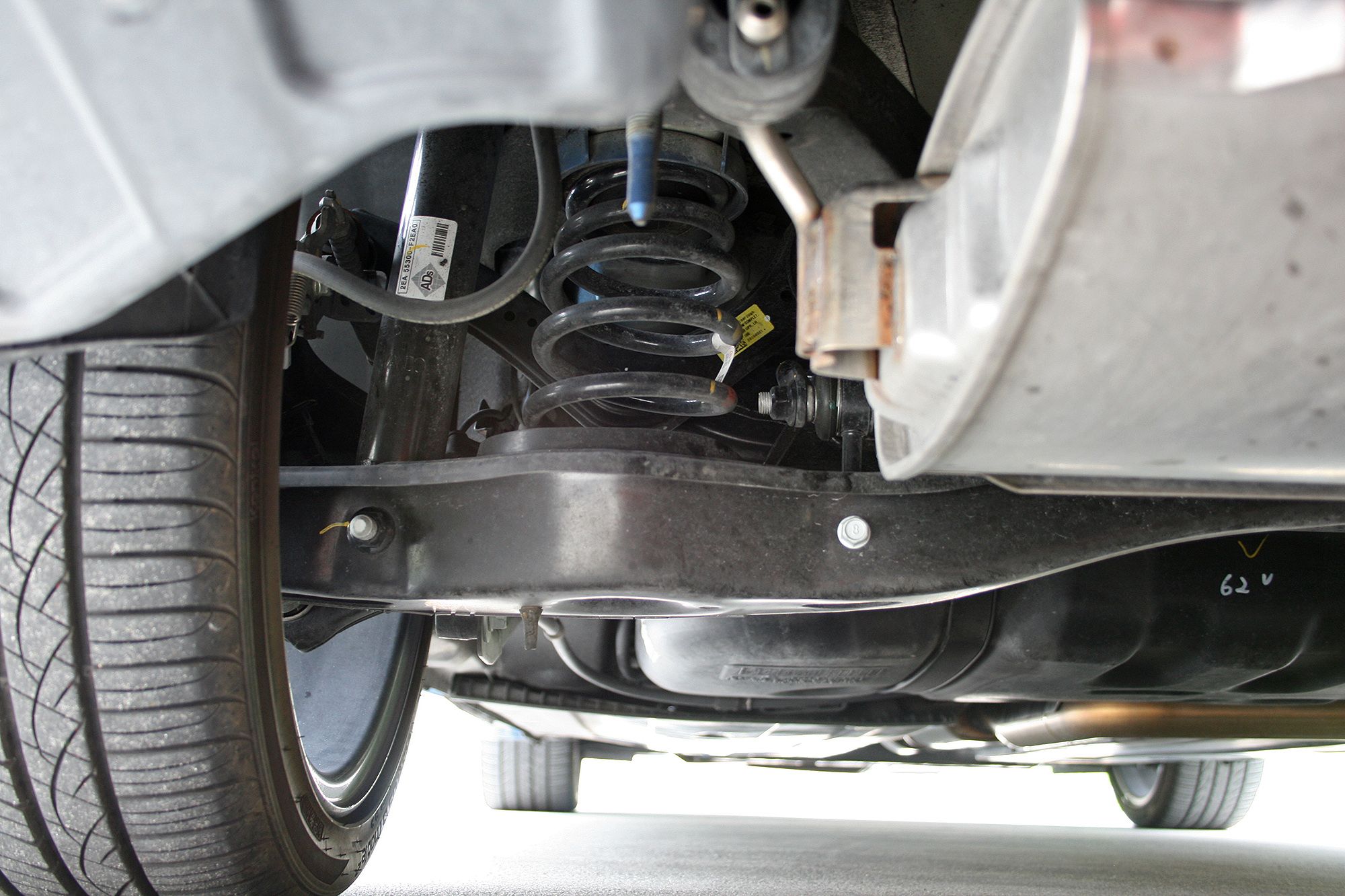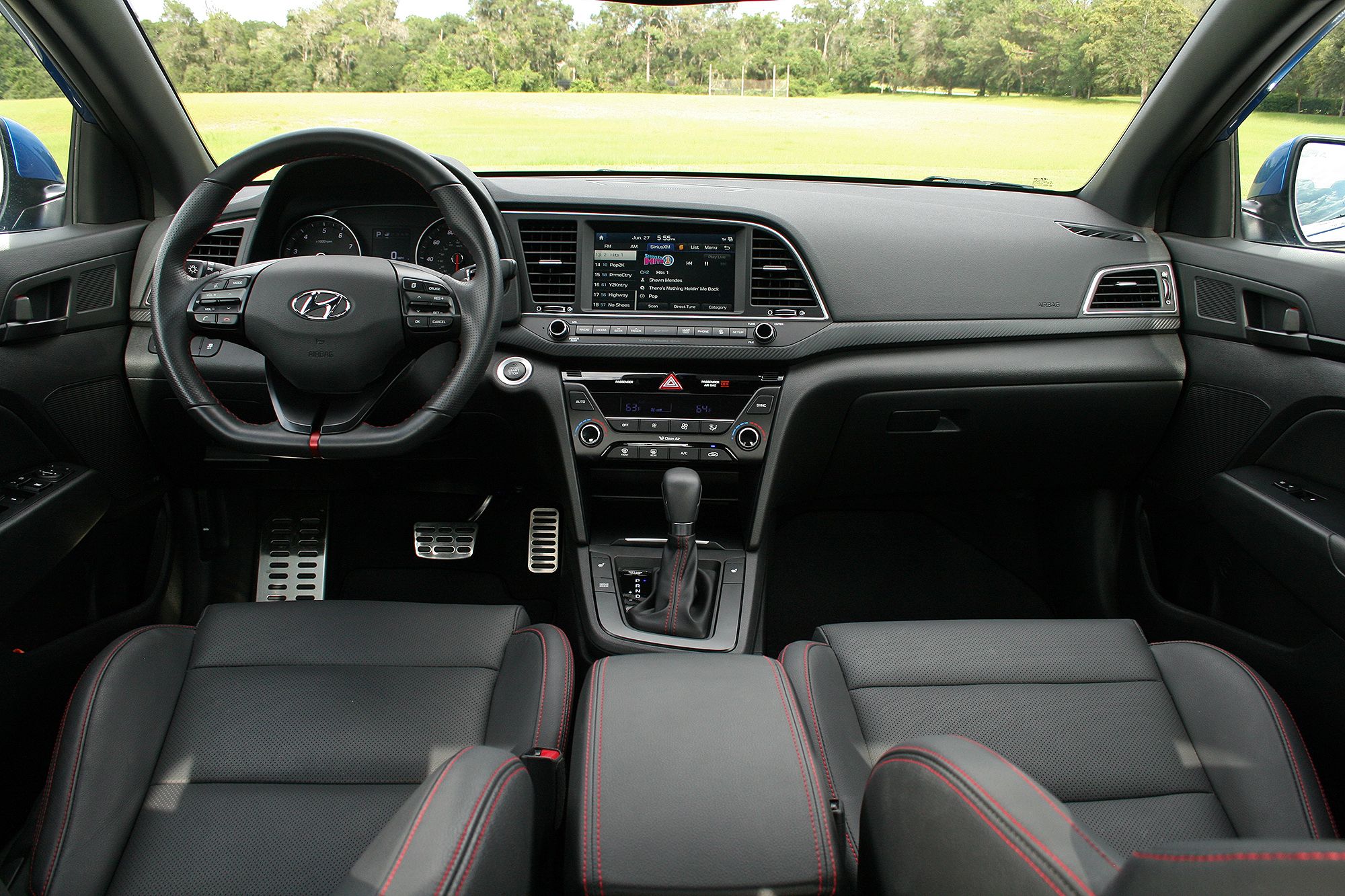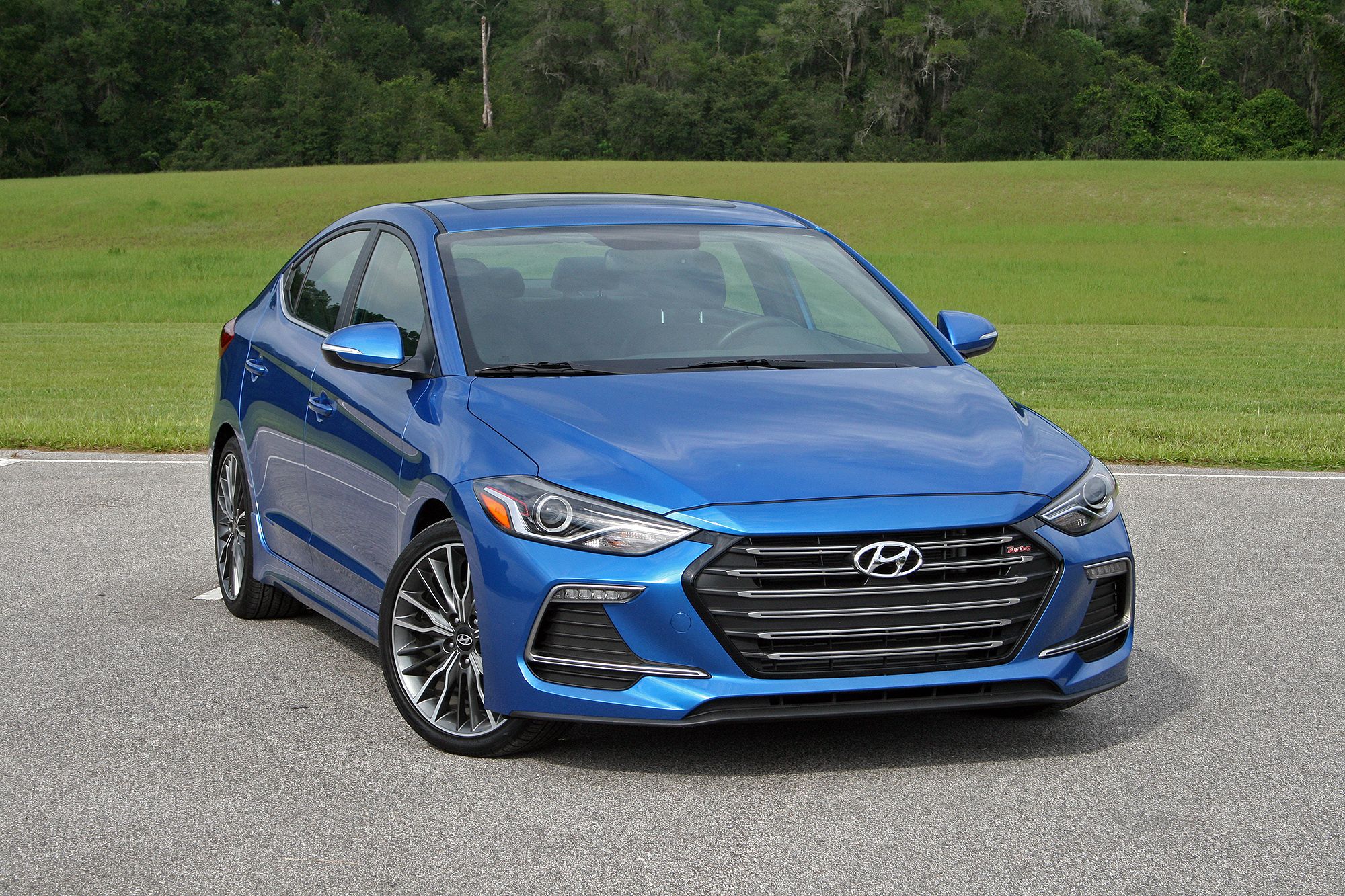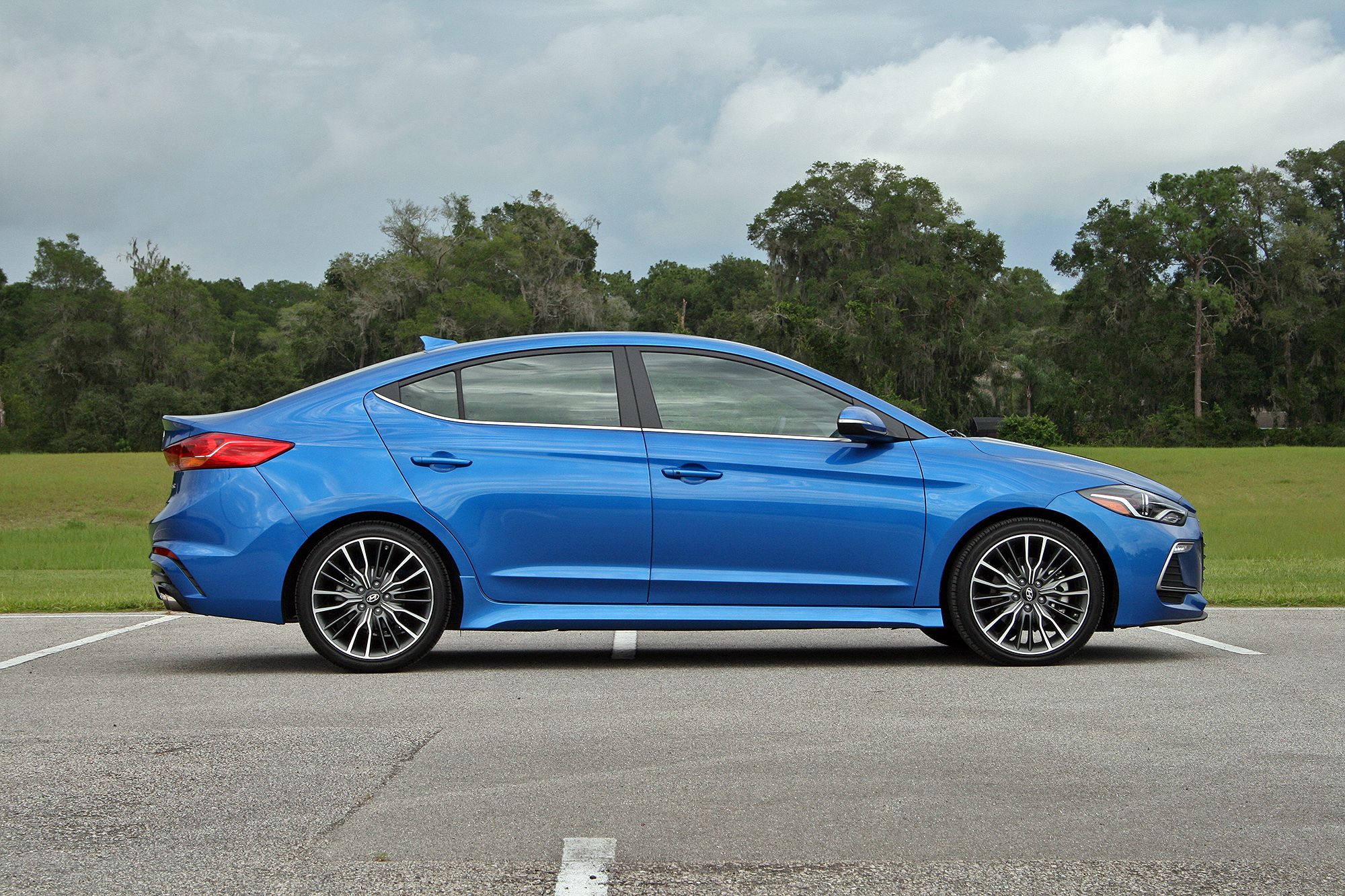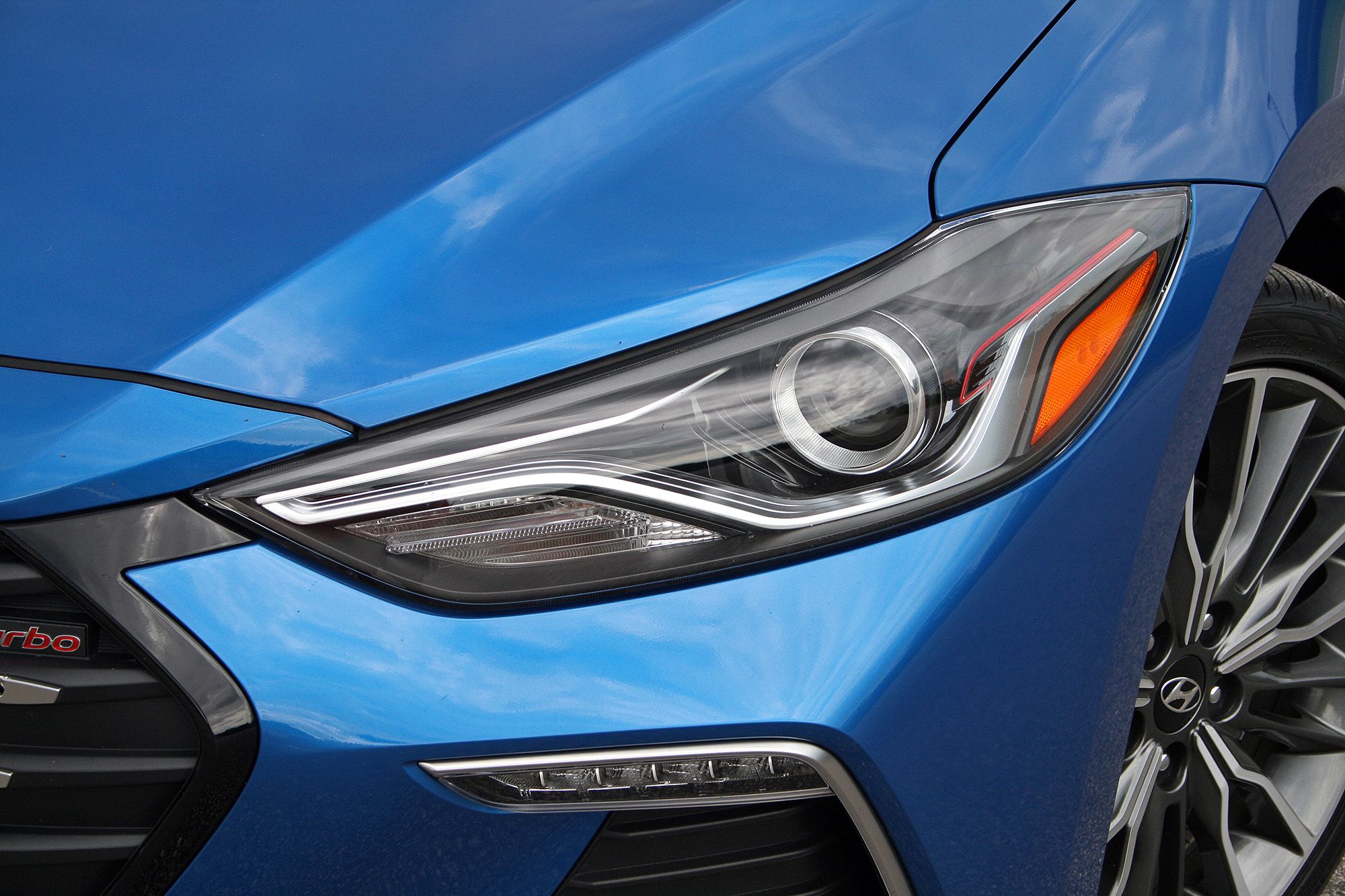It’s hard to believe Hyundai has six generations of Elantra models on the road, yet, here we are. The latest model actually debuted for 2017, making it among the newest in the compact sedan segment. The sixth-generation also brings several distinct trim levels. These include the standard Elantra, the fuel-sipping Elantra Eco, and the road-hugging Elantra Sport.
The past two weeks have seen an Electric Blue Elantra Sport sitting in my driveway, so I’ve had plenty of time to develop a love/hate relationship. Fortunately, the balance sways far more to the love side of the equation. Hyundai has done a good job modifying the Elantra for spirited driving. In fact, the Elantra Sport gets an entirely different rear suspension over non-Sport models. Gone is the traditional torsion beam setup, swapped with an independent, multi-link system with stiffer coil springs and dampers. Oh, and the drivetrain is Sport-specific, too, with a 1.6-liter turbocharged four-cylinder making 201 horsepower and backed by a six-speed manual or a dual clutch automatic. Hyundai then bolts on bodywork that’s more athletic and youthful. But not everything is rainbows and butterflies. Check out my list of Highs and Lows of the 2017 Hyundai Elantra Sport.
Continue reading for more information.
High: Peppy Powertrain
The Elantra’s available powertrains are surprisingly widespread. There’s the standard 2.0-liter four-cylinder found in most Elantras, the 1.4-liter turbo-four in the fuel-sipping Elantra Eco, and this, the 1.6-liter turbo-four in the Elantra Sport. Obviously, the Sport enjoys the most power and torque of the trio.
The 1.6-liter “Gamma” turbocharged four-cylinder makes 201 horsepower at 6,000 rpm and 195 pound-feet of torque between 1,500 and 4,500 rpm. That’s 54 more horsepower and 63 more pound-feet of torque than the 2.0-liter and 73 horses and 39 pound-feet more than the 1.4-liter in the Elantra Eco. Sure, 201 horsepower isn’t outrageous power, but it’s more than enough to motivate the 3,000-pound Elantra Sport. I found the engine to have gobs of tire spin-inducing torque just off idle, making more for quick starts off the line. The generous torque also allows the dual clutch to keep engine revs low, keeping fuel economy high. The EPA estimates fuel economy at 26 mpg city, 33 mpg highway, and 29 mpg combined.
|
Engine |
Gamma 1.6L Turbo-GDI inline four cylinder |
|
Horsepower |
201 HP @ 6,000 RPM |
|
Torque |
195 LB-FT @ 1,500-4,500 RPM |
|
Transmission |
six-speed manual |
|
Fuel economy (city/highway/combined) |
26/33/29 |
Low: Dual Clutch Isn’t Dual Purpose
While the seven-speed dual clutch transmission does a great job at keeping engine revs low during normal driving, the gearbox is often jerky at slower speeds around town. Gear engagement takes noticeable millisecond before engaging when moving off the brakes and onto the throttle. The same with going on-power from a coast. Vibrations add to my disconcertedness. Still, it’s nothing major and is typical of normal dual clutch behavior. However, the dual clutch also behaves typical to its kind when driven hard. The gearbox performs lightning-fast shifts when under heavy throttle, both in automatic and manual modes. It also responds quickly to the steering wheel-mounted paddle shifters, furthering the Elantra Sport’s credibility. In short, the dual clutch gearbox works great going fast, just not so well around town.
High: Upgraded Suspension
Working well in nearly every situation is the Elantra Sport’s upgraded suspension. The independent, multi-link rear suspension feels planted and free of squirm. An added 15-milimeter anti-roll bar helps with body roll, as does the thicker front anti-roll bar. All four corners have stiffer springs and damper, helping the car tackle corners with more confidence. Yet the suspension isn’t harsh over rough pavement or expansion joints. Hyundai did a good job riding the line between sporty and overly taught, making the Elantra Sport easy to live with yet fun to drive.
Low: Dark Interior
Okay, so Hyundai gave the Elantra Sport an upgraded interior with black leather seats with red contrast stitching, thickly bolstered front buckets, a flat-bottomed steering wheel with red accents, and a faux carbon fiber trim along the dash. But sadly, the interior remains dark and somewhat forgettable. Don’t get me wrong – Hyundai has baked in some extremely good ergonomics and logical buttons, but the overall appeal is somewhat lacking. It would be great to see some more color – say that anodized red hue used on the steering wheel carried across the dash rather than the dark carbon fiber trim. Anything would help, really. Then again, aesthetics are subjective. Feel free to disagree in the comments.
High: Sporty Bodywork
Again subjective, but I think Hyundai did a great job setting the Elantra Sport apart form the other Elantra models. The front fascia is slightly more aggressive without trying too hard. It’s far better looking than the Honda Civic Si and its boy-racer theme. I especially like the handsome 18-inch alloy wheels. They are some of the nicest in the class. Around back, the rear bumper enjoys an equally modest update with a faux diffuser and vertical ducts, but has a very functional, dual-tipped exhaust accented with chrome. The Electric Blue body color also adds character to the car, though it isn’t exclusive to the Elantra Sport trim.
High: The (Low) Price
Of course, the Elantra Sport remains an attractive buy, not only because of its sporty nature yet mild-mannered daily livability, but also thanks to its price. It carries a base MSRP of only $21,650 with the six-speed manual transmission. Opting for the seven-speed dual clutch adds $1,100. The only major option is the Premium Package. It’s sort of pricy at $2,400, but includes the eight-inch infotainment system (up from seven) with navigation, an Infinity sound system, Hyundai’s Blue Link connectivity, a power sunroof, automatic dual-zone climate controls, an auto-dimming rearview mirror with HomeLink, and Blind Spot Monitoring with Rear Cross-Traffic Alert. These features make it hard argue against getting the Premium Package. Still, the total price is very manageable at $24,050 for the manual-equipped car and right at $26,000 for the dual clutch. Hyundai sure drives a good bargain.
Stick around to TopSpeed for my full review of the 2017 Hyundai Elantra Sport.
References
Read our full review on the 2017 Hyundai Elantra Sport.

